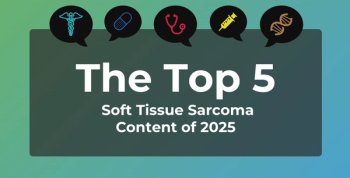
New Developments Warrant Rethinking HCC Transplant Criteria
Key Takeaways
- Liver transplantation is the sole curative option for HCC, but new therapies prompt reconsideration of transplant timing and eligibility criteria.
- Improved early detection and downstaging strategies, such as TACE, enhance post-transplant outcomes and survival rates for HCC patients.
Downstaging and bridging strategies are changing how hepatocellular carcinoma (HCC) is treated.
Liver transplantation remains the only curative treatment for patients with
The authors noted that primary liver cancer is the fourth leading cause of cancer-related death worldwide, with more than 800,000 new cases diagnosed in 2018. HCC represents
Liver diseases like cirrhosis and chronic hepatitis B or C infections remain the predominant risk factors for HCC.1 However, vaccination efforts have reduced the risk of hepatitis infection. At the same time, though, cases of HCC attributed to alcohol-related liver disease are on the rise.
Knowing the risk factors for HCC is important, because a primary method of early detection is screening high-risk individuals. The authors noted that the disease is typically asymptomatic in its early stages, but once symptoms appear, the risk of death is high. The median survival for patients with symptomatic, advanced-stage HCC is between 12 and 18 months, they wrote.
Ideally, high-risk individuals should be screened with ultrasonography twice a year. However, abdominal ultrasonography is less sensitive in patients with obesity or alcohol-related kidney disease. In such cases, concomitant alpha-fetoprotein testing can help improve the accuracy of the tests. Magnetic resonance imaging (MRI) or triple-phase computed tomography (CT) can provide confirmation in cases of suspected HCC.
In terms of therapy, the investigators explained that downstaging strategies, including radiofrequency and microwave ablation and transarterial chemoembolization (TACE) have shown promise in reducing tumor burden and improving post-transplant outcomes for people with HCC.
“While the prognosis for recurrent HCC is generally poor, aggressive treatment options, including surgery and systemic therapies, have shown potential in improving patient outcomes,” they wrote.
For liver transplantation itself, the investigators noted the 2 primary types of liver transplant involve transplants from a deceased donor and transplants from a living donor who undergoes a hepatectomy. The wait times tend to be shorter for living-donor transplants, and some studies have suggested favorable survival outcomes compared with deceased-donor transplants.
However, the authors explained one challenge with living-donor transplants is the difficulty of the surgery. The procedure brings with it ethical considerations due to the risks to the living donor.
For recipients of transplants, the investigators noted that there is a significant risk of recurrence, even after otherwise successful transplants.1
The authors also argued that the thinking around which patients are eligible for transplants needs to evolve. They noted that the criteria used to evaluate fitness for transplant was proposed nearly three decades ago.
“However, as available therapies for HCC bridging, downstaging, and post-LT [liver transplant] recurrence continue to evolve and improve, it is essential that we critically reevaluate these criteria to avoid unfairly excluding patients with more advanced disease who may be appropriate for LT both now and in the future,” they wrote.
References
- Sequeira LM, Ozturk NB, Sierra L, et al. Hepatocellular carcinoma and the role of liver transplantation: an update and review. J Clin Transl Hepatol. 2025;13(4):327-338. doi:10.14218/JCTH.2024.00432
- Llovet JM, Kelley RK, Villanueva A, et al. Hepatocellular carcinoma. Nat Rev Dis Primers. 2021;7(1):6. Published 2021 Jan 21. doi:10.1038/s41572-020-00240-3
- Graziadei IW, Sandmueller H, Waldenberger P, et al. Chemoembolization followed by liver transplantation for hepatocellular carcinoma impedes tumor progression while on the waiting list and leads to excellent outcome. Liver Transpl. 2003;9(6):557-563. doi:10.1053/jlts.2003.50106
- Olthoff KM, Smith AR, Abecassis M, et al. Defining long-term outcomes with living donor liver transplantation in North America. Ann Surg. 2015;262(3):465-475. doi:10.1097/SLA.0000000000001383
Newsletter
Stay ahead of policy, cost, and value—subscribe to AJMC for expert insights at the intersection of clinical care and health economics.








